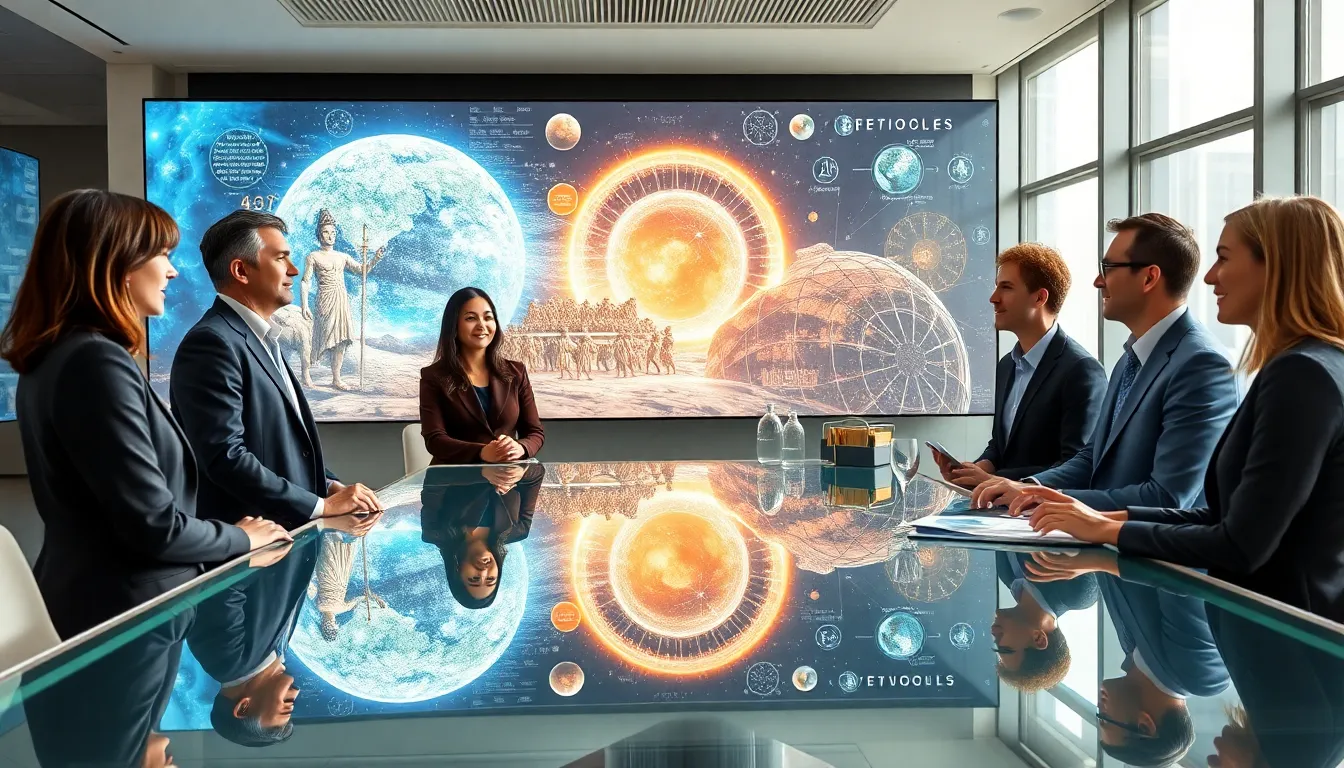Ever wondered what our ancestors thought the future would look like? Picture this: back in the 1950s, people envisioned flying cars, colonies on Mars, and robots serving breakfast in bed. Spoiler alert: we’re still waiting on that breakfast robot. While some predictions leave us chuckling, others have shaped our reality in ways we could never have imagined. In this exploration of old predictions of the future, we’ll jump into the wild forecasts of yesteryears, examine their cultural significance, and discover what these past visions reveal about human nature and society as a whole. Let’s take a trip down memory lane and peek at what those crystal balls predicted.
Table of Contents
ToggleThe Nature Of Predictions

Predictions about the future have always captivated human imagination. From ancient oracles gazing into their bowls of water to modern-day scientists crunching numbers on their high-tech computers, the desire to foresee what lies ahead is deeply ingrained in our psyche. Predictions serve as a reflection of contemporary fears, aspirations, and societal values.
Think of predictions not as immutable truths but as snapshots of hopes and anxieties from their time. This begs the question: why do we make predictions? It’s all about understanding what we can’t control. As humans, facing uncertainty is like trying to find your way in a maze: predictions provide a light at the end of the tunnel, even if that light is a bit flickering.
Various forms emerge in predictions, scientific, cultural, technological, and even fantastical. They are created from observations of the present and reflections on human behavior. With shifting norms and advancements, predictions often reveal the truth about societal beliefs at the time of their creation.
Cultural Contexts For Future Predictions
Each culture’s outlook on the future provides a unique lens through which we can interpret predictions. These cultural contexts not only inform predictions but also reflect societal values and fears.
For example, consider the ancient Greeks and their reliance on the Oracle of Delphi. Predictions made by oracles reflected the importance of fate and divine will in their lives. Humanity’s fate seemed intertwined with a cosmic plan, as if the future was a script written by the gods. Contrast this with the futuristic visions of the 20th century that leaned heavily on technological advancement, think about the Jetsons and their flying cars. These predictions reveal a growing belief in the power of human ingenuity.
In Japan, technocentric predictions often emerged out of necessity, as seen in the post-war years. Society battled with resource shortages and devastation, shaping a future vision where technology would triumph over hardship. So, predicting the future in different cultures reveals not only aspirations but also historical contexts that molded their collective psyche.
Famous Predictions And Their Origins
When it comes to famous predictions, some stand out for how accurately (or inaccurately) they defined the future.
Technological Predictions That Came True
One shining example is the invention of the smartphone. Back in 1968, computer scientist Douglas Engelbart introduced the idea of the ‘oN-Line System,’ foreseeing a world where computers would create a ‘personal’ experience for users. Fast forward to today, and smartphones have become an essential part of our lives, connecting us in ways that Engelbart could only dream of.
Another noteworthy prediction comes from Science Fiction writer Arthur C. Clarke. In 1964, he predicted satellite communication, claiming that satellites in geostationary orbits would change global communication forever. He was right. This once fluffy idea became a cornerstone of our communication infrastructure.
Predictions That Missed The Mark
But not every prediction has hit the mark. Who could forget the 1930 prediction that by the year 2000, everyone would have a personal robot for household chores? While we may have seen significant advances in robotics, robots remain more suited for factories than domestic life. Then there’s the infamous flying car prediction from early sci-fi, where the future was envisioned as a sky filled with vehicles zipping through the air. Instead, we’ve got traffic jams on the ground.
These failures are just as striking as the successes. They serve as interesting reminders that foresight often doesn’t align with reality, exposing the fallibility of human imagination.
The Impact Of Predictions On Society
Predictions shape society in profound ways, creating frameworks for dreams and aspirations. When people hear predictions, especially from trusted sources, it can guide behavior and influence public opinion. For example, after the launch of Yuri Gagarin into space in 1961, many predictions about space tourism hit the public domain. They inspired a generation to dream beyond Earth’s surface and cultivate interest in space exploration.
Also, predictions can often result in self-fulfilling prophecies. Consider the stock market: predictions of economic growth can stimulate investment, leading to the growth they envision. Conversely, dire predictions can trigger panic and downturns, showcasing how the future isn’t written in stone, it’s sculpted by collective beliefs and actions.
In today’s world, the impact of predictions extends to the climate crisis. As scientists predict the various futures we may face, public concern grows, prompting action and advocacy for sustainability. Society responds not only with fear but also with hope, demonstrating a balance of emotions that these predictions evoke.
Lessons Learned From Historical Predictions
Looking back at historical predictions offers valuable lessons about the limits of foresight and the ever-changing nature of society. One important takeaway is that not all predictions age well. The fluidity of technology and societal values means that many well-intentioned forecasts can turn into cultural artifacts that reflect more about the time they were made than about the future.
For instance, the prediction made in the early 20th century about paperless offices could not have been more off base, yet it reflected a hope that innovation would reduce labor and simplify life. In reality, we have only seen a growing need for more paperwork with the digital era.
Also, predictions teach important lessons about resilience. The ones that missed the mark remind us of the folly of overconfidence in forecasting abilities. Society has thrived not only on technological advancements but also on its ability to adapt to unpredicted challenges. The key is to remain agile and receptive to change as the future unfolds.




